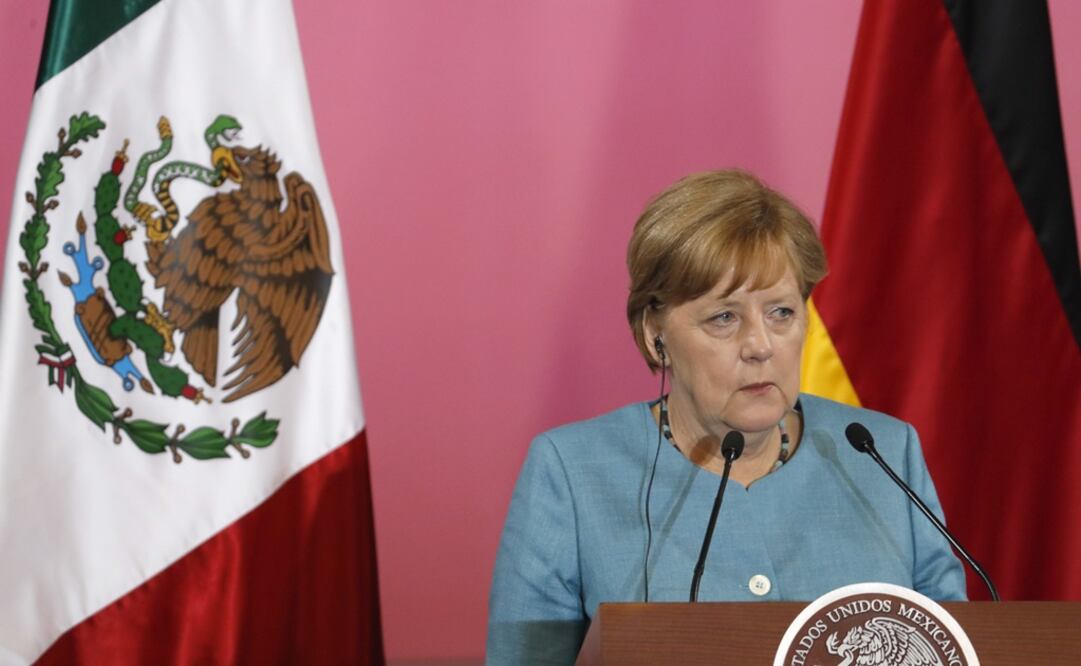Más Información

Padres y normalistas de Ayotzinapa marchan en Chilpancingo; acusan impunidad por asesinatos y la desaparición de los 43

Sheinbaum reconoce labor de las Fuerzas Armadas; hombres y mujeres que entregan su esfuerzo y su vida por amor al pueblo, destaca

Trump minimiza nuevas fotos con el pederasta Epstein publicadas por el Congreso; "no son gran cosa", dice

Recuperado, Ealy Ortiz retoma su liderazgo en EL UNIVERSAL; encabeza comida de fin de año de la empresa

Localizan a Yareth Alexandra, joven de 17 años privada de la libertad en Tecámac; la tenían escondida en una bocina
Mexico
and Germany , in spite of the apparent cultural differences and the undisputed geographical distance, share a strong old bond forged by their international relevance—never exempt of difficulties or clashes—both openly betting on the future.
A long journey into history is necessary to trace the origins of the bilateral relationship which date back to the New Spain’s colonial era with the arrival of German clergy and technicals.
Subsequently, thanks to the tireless efforts of Prussian geographer, explorer, naturalist, and polymath Alexander von Humboldt , who once wrote “if you would only call a place of this Earth a paradise, it would be Mexico,” the German interest grew and after Mexico’s Independence ( 1821 ), small traders, and artisans settled in a nascent Latin American nation.
According to the Mexican Foreign Ministry , the establishment of diplomatic relations ( 1879 ) gradually promoted commerce and navigation treaties, along with political and cultural links.
In the 20th century , it is worth mentioning the Zimmermann Telegram , a peculiar development in the context of the First World War consisting of a secret diplomatic communication issued by the German Empire’s Foreign Office and intercepted by the British intelligence in 1917 that proposed an alliance between Germany and Mexico .
While preparing the resumption of unrestricted submarine warfare against the Allies, an act the Kaiser government presumed would almost certainly lead to war with the then-neutral United States , the proposal highlighted “generous financial support and an understanding on our part [Germany] that Mexico [would] reconquer the lost territory in Texas , New Mexico , and Arizona .”
Nevertheless, Mexico remained neutral, as the country was in full-scale Revolutionary War and a military commission formed by President Venustiano Carranza soon concluded that entering in the conflict would not be in the national interest.
Two decades later, President Manuel Ávila Camacho declared war to the Axis Powers ( 1942 ) following the loss of two oil tankers, Potrero del Llano and Faja de Oro , torpedoed by German U-boats in the Gulf of Mexico.
Dual Year
Today, the bilateral relationship can be described as both mature and responsible , evidenced by the numerous and regular high-level official meetings which cover a wide array of issues, such as trade, human rights, environmental protection, politics, diplomacy, science, academy, and even artistic cooperation.
The Dual Year Mexico-Germany/Germany-Mexico was celebrated in 2016-2017 , improving tourism, investment, education, social and innovation projects for both countries.
Currently, nearly 2,000 companies with German capital (USD$30,000 million) are operating in Mexico , generating more than 120,000 direct jobs. Germany is the main trading partner of Mexico in the European Union , with a commercial exchange of USD$17,484 million only in 2015 and it is the fifth at international level.
For its part, Mexico is the main market for German exports in Latin America and it is the only country in the region with a bilateral free trade agreement and a reciprocal investment protection agreement.
German companies
working in Mexico are focused on the pharmaceutical, chemical, electric-electronics, transport and logistic sectors and a special mention must be made regarding the automotive and spare parts market contributing since the 1960s to the rapid development of those areas in our country.
This week, Puebla Governor , José Antonio Gali Fayad , revealed in Wolfsburg ( Lower Saxony State ) that vehicle manufacturer Volkswagen is planning to invest USD$658 million in its plant in Puebla to improve their facilities for the production line of the Jetta A7 sedan .
Edited by
More by
Noticias según tus intereses
[Publicidad]
[Publicidad]









